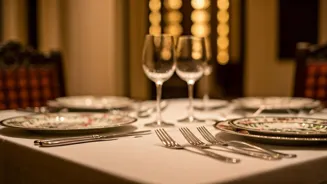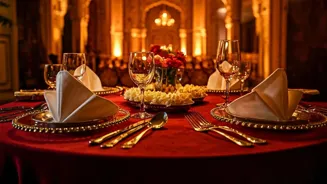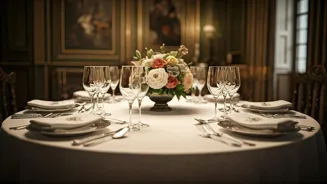What is the story about?
Ditch the awkward silences and learn the art of elegant dining! A British etiquette coach reveals 5 fine-dining secrets, tailored for the modern Indian diner, helping you master every course.
Wait Before You
Remember the old saying 'Patience is a virtue?' Well, it definitely applies to dining! Wait for everyone at the table to be served before you start eating. This shows respect and ensures a cohesive dining experience, especially important in Indian gatherings where community is key. This rule is particularly relevant in India where family meals and social events are common.
Offer First, Serve
Consider this a lesson in good 'sanskaar'! Before helping yourself, offer food to others. It's a simple act of courtesy, especially when dishes are being shared family-style, a common practice in Indian cuisine. Think of it as an extension of the 'Atithi Devo Bhava' principle - treating guests as gods - making your dining experience more welcoming.
Cutlery Resting Position
Cutlery talk! When you pause during a course, place your knife and fork in the 'resting position'. This means placing them at a 45-degree angle, with the tips pointing towards each other. This signals to the waitstaff that you're not finished yet, so they don't clear your plate prematurely. It's about conveying ease and politeness.
Phones Away, Please!
Keep the dining table phone-free. In a society where smartphones are constantly in use, creating a phone-free zone at the table is essential for maintaining a more intimate environment. This promotes face-to-face interaction and allows everyone to fully enjoy the food and company. It's a perfect example of 'less screen time, more real time'.
Finished Cutlery Position
The 'finished position' signals you're done! Place your knife and fork parallel to each other across the plate, with the handles pointing towards the lower right side. This tells the waitstaff that you've finished your meal and they can clear your plate. This signals that you've completed the course, and that the table can be cleaned.
Do you find this article useful?










